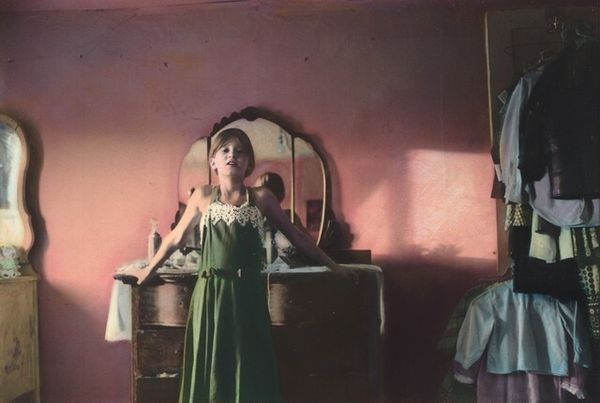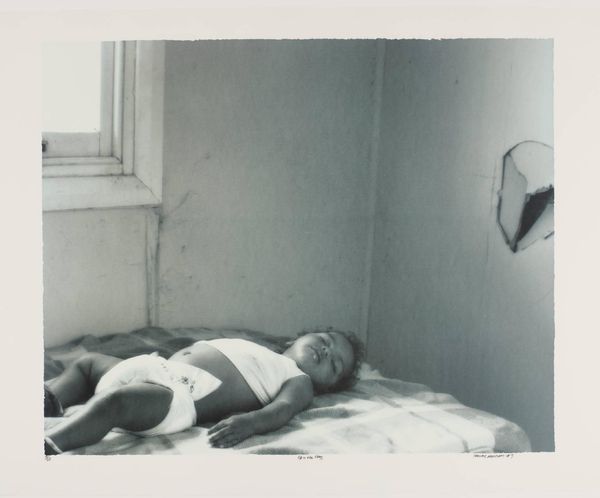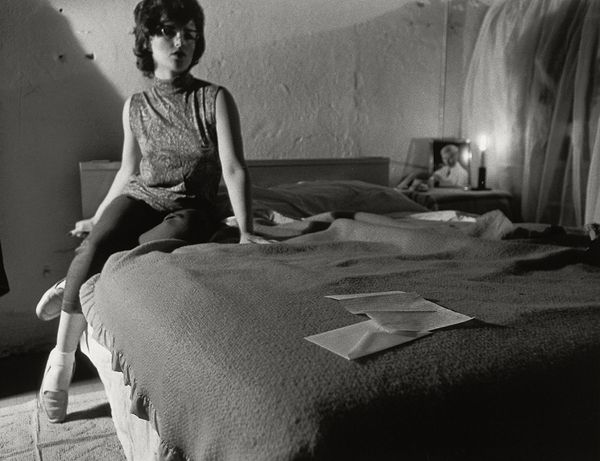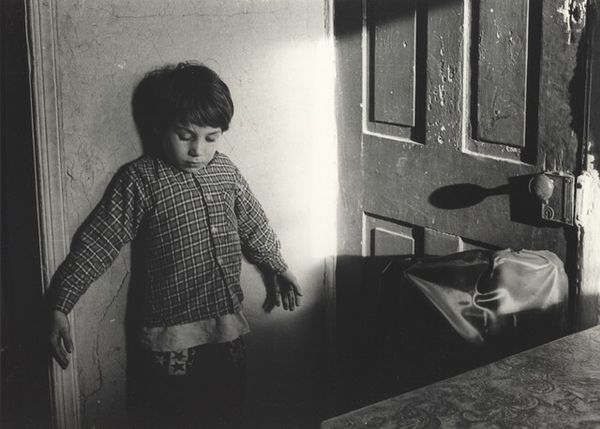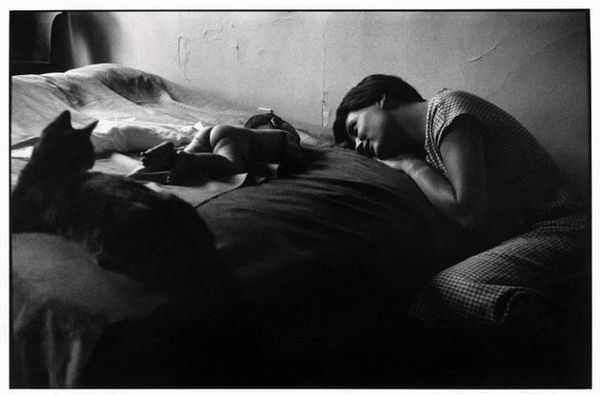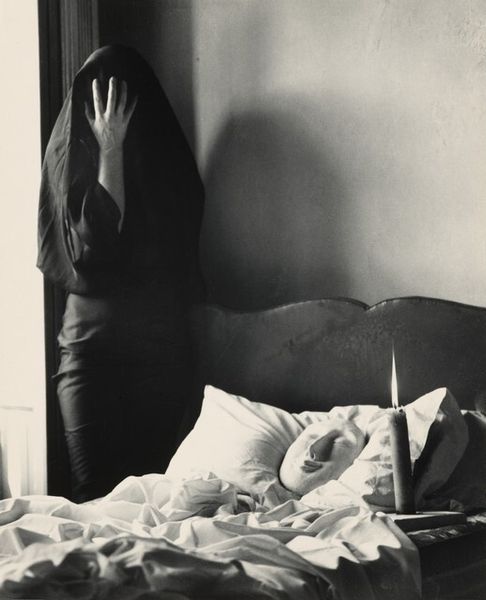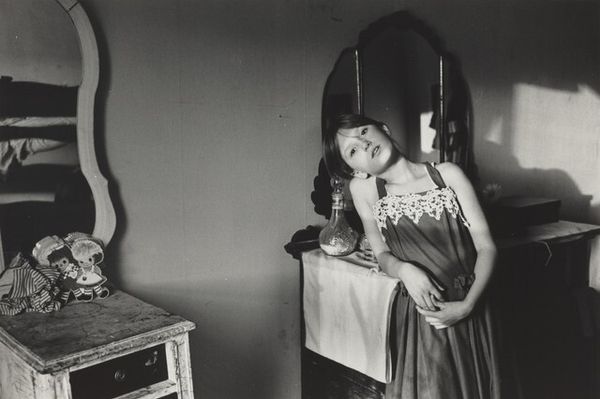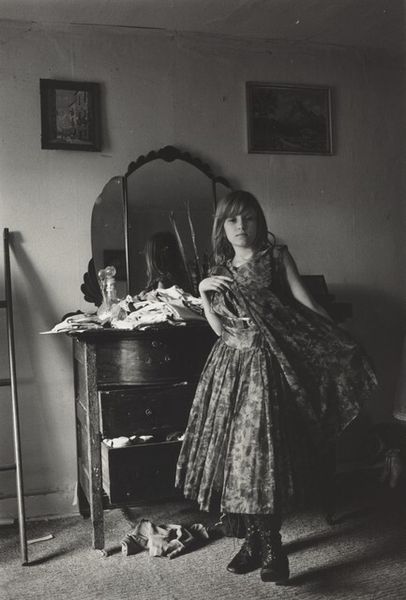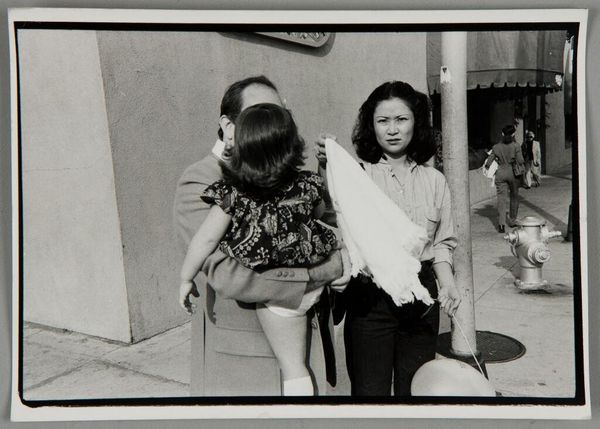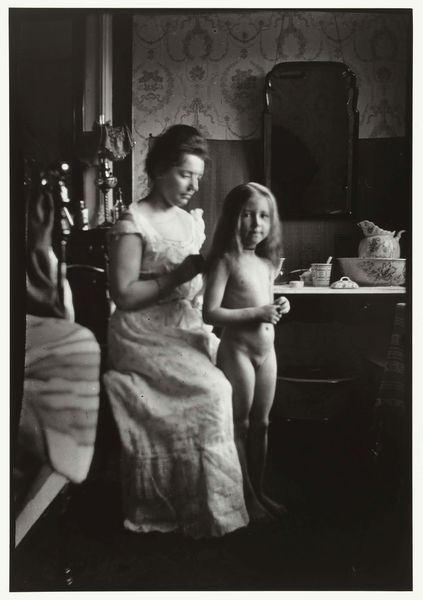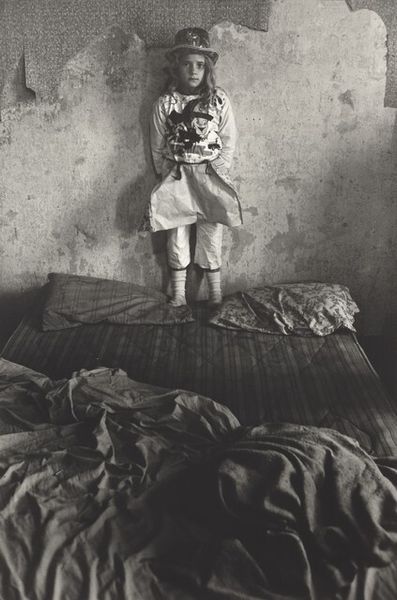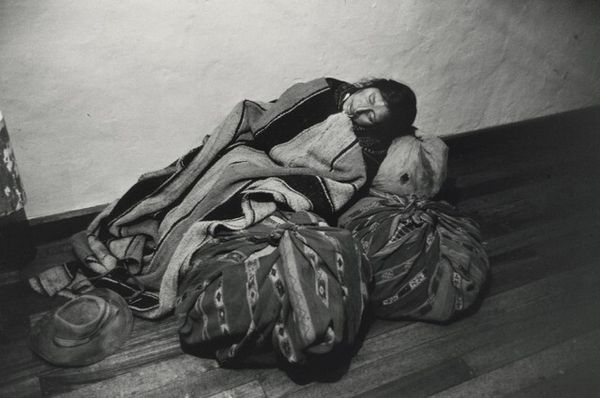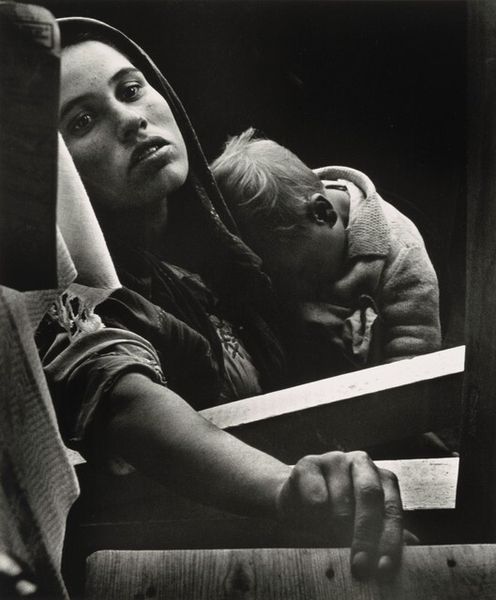
photography, gelatin-silver-print
#
portrait
#
contemporary
#
black and white photography
#
figuration
#
photography
#
black and white
#
gelatin-silver-print
#
monochrome photography
#
monochrome
Dimensions: overall: 35.6 x 27.6 cm (14 x 10 7/8 in.)
Copyright: National Gallery of Art: CC0 1.0
Curator: "Joan and Samantha," a gelatin silver print by Joan Cassis, made in 1973. It's quite a compelling piece. Editor: Stark. My first reaction is the light—or lack thereof. The textures look almost raw; you can almost feel the roughness. Curator: It's the social context that truly grabs me. Cassis created this piece during a period when women artists were challenging the male gaze, consciously portraying realities often ignored by mainstream art. Think of intersectional feminism gaining traction. Editor: I can see that reflected in the subjects. What do we know about the process? The starkness makes me think of available light, maybe a quick, unposed shot, or perhaps carefully composed but to seem natural, spontaneous. Curator: Well, their gazes certainly convey something intimate. It evokes discussions on power, vulnerability, and motherhood through a woman’s lived experience. The very act of representation becomes political, and you have to wonder whether subjects or locations were prearranged. Editor: You’re right, the composition can lead to questions. I am compelled to ask more about those details; note the scribbles in the background. They could hold information; is it random or meant as communication? How were these works crafted? Were images selected according to how truthfully they reveal everyday reality, materials available at the time or something specific to Cassis? Curator: Looking at Cassis's background within art movements, you have a sense of that DIY aesthetic filtering through, right? Photography's own status, even then, also played a role, still slightly on the fringes. Editor: True. Photography in itself had its place regarding fine art at the time. Yet, photography democratized image creation in new ways with new, portable tools. A means to expand art to reach a larger audience through more accessible making practices. Curator: I see Cassis not just as a photographer but as an active agent reflecting women’s social landscape in a raw but impactful way, shifting representations through both production and perspective. Editor: Absolutely, these raw pieces reflect an intention not just to capture the light but also labor practices as part of art production and challenge the norms around art value for all viewers. Curator: Precisely. Understanding this piece involves exploring how personal stories intertwine with broader socio-political conversations of the period. Editor: To understand, really engage the materiality. Cassis shows viewers new artistic models as makers or just thinking about what constitutes art at its core and potential impacts.
Comments
No comments
Be the first to comment and join the conversation on the ultimate creative platform.
